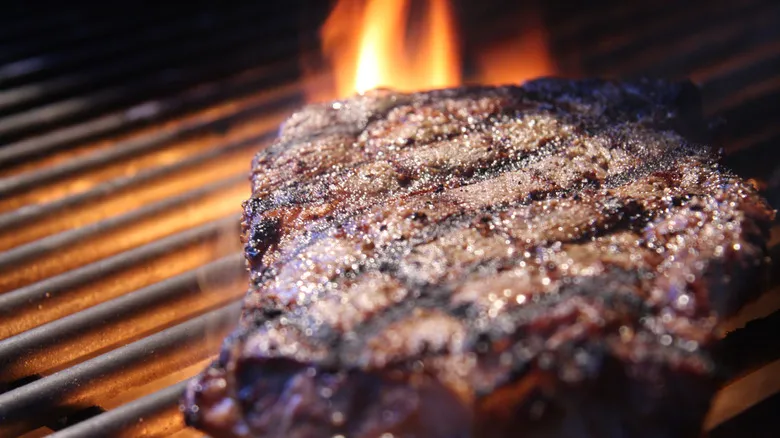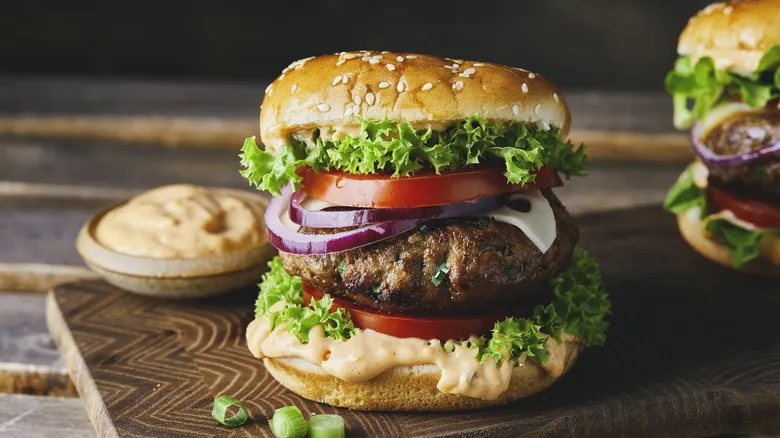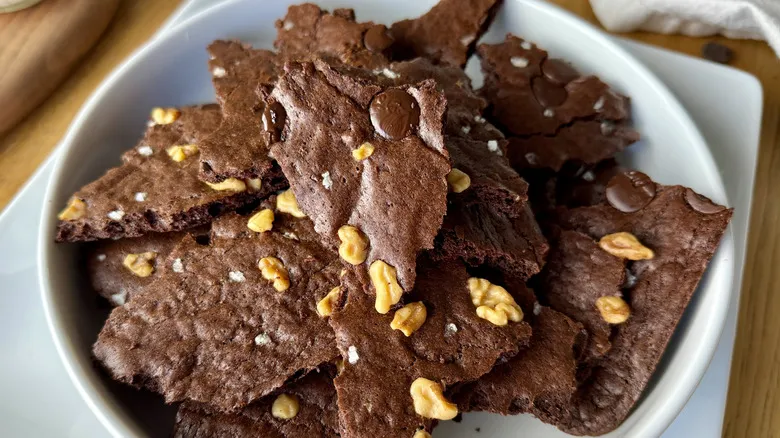Generous marbling makes ribeye incredibly juicy
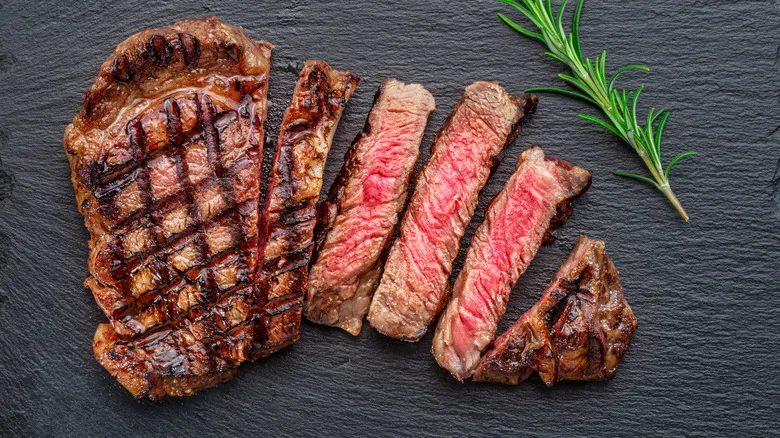
Ribeye is often considered the most sought-after and highly regarded steak cut available. It is sourced from the ribcage of the cow, and when you opt for bone-in ribeyes, they will include a section of the rib. The ribeye primarily consists of a muscle known as the longissimus dorsi, which extends along the cow's back from the shoulder to the hip. Since this muscle is not heavily utilized in the cow's movement, it remains relatively unexercised, resulting in thin, tender muscle fibers.
The ribeye's most valued characteristic is its abundant intramuscular fat. Typically, ribeyes exhibit more marbling than any other cut of beef, and a high-quality ribeye steak can be identified by the delicate white flecks of fat interspersed within the red meat. This marbling produces two delightful outcomes. First, as the steak cooks, the fat melts into the meat, creating an exceptionally juicy experience. Second, fat enhances flavor, meaning that the more marbling a steak possesses, the richer its taste will be.
To truly appreciate the flavor of a well-marbled ribeye steak, it's best to let it stand on its own. Using a marinade could mask the pure beef flavor, undermining the cut's most appealing quality. Ribeye steaks rank among the pricier beef cuts, so it's important not to squander them. Additionally, the fat content ensures the meat remains juicy without the need for any tenderization.
Strip steaks have a rich flavor on their own
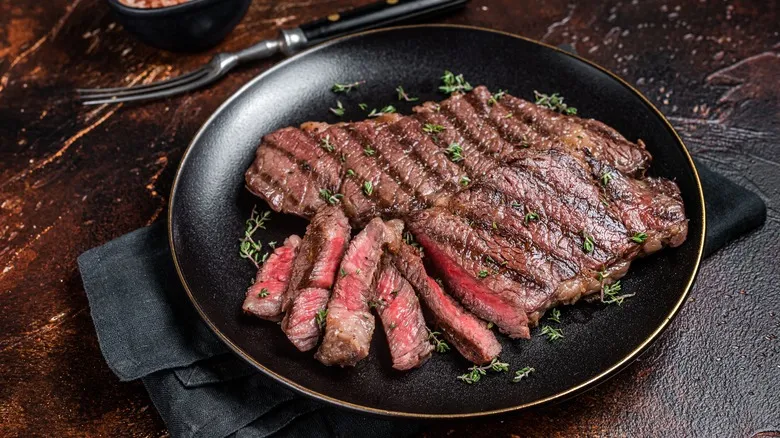
Strip steaks are marketed under various names, with the most prevalent being New York strip. Depending on the region, you might also encounter terms like Kansas City strip, Omaha strip, or strip loin steak. These steaks are derived from the longissimus dorsi muscle of the cow, specifically from a section located just behind the ribs. While strip steak and ribeye come from the same primary muscle, the distinction lies in the fact that strip steak tends to be slightly leaner. Nonetheless, both cuts are celebrated for their juicy marbling and robust flavor.
Strip steaks are especially favored for their rich, beefy taste. Similar to ribeye steak, marinating this cut may diminish its inherent richness by adding too many competing flavors. Most strip steaks are available boneless, but for an even bolder flavor, consider opting for a bone-in strip. These are occasionally referred to as "club steak" or "shell steak," and the presence of the bone enhances both the flavor and tenderness of the cut.
Filet mignon is the most tender steak
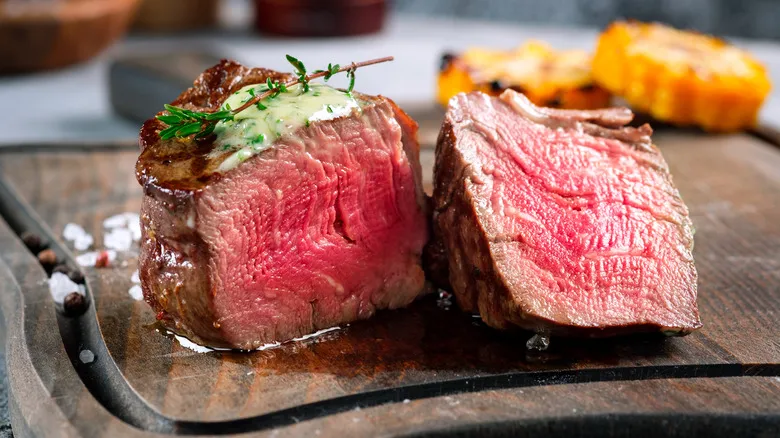
Filet mignon is renowned as the most tender steak cut and is a perennial favorite in steakhouses around the globe. Its remarkable tenderness is especially impressive given that it is a very lean cut with minimal marbling. This cut is sourced from the beef tenderloin, a long muscle situated beneath the cow's backbone. The tenderloin is not heavily engaged in the cow's movements and carries very little weight. Generally, the less active a muscle is, the more tender the resulting meat. Unlike many other lean cuts, filet mignon contains very little connective tissue, which contributes to its exceptional tenderness.
One challenge with filet mignon is that it has a much subtler flavor compared to most other beef cuts, though it does possess a slight sweetness. A marinade could easily overpower the delicate taste of a filet, making it better suited for other uses. Similar to ribeye and strip steak, filet mignon ranks among the most expensive steak options available, and if you're going to invest in it, you should savor it in its unadulterated form. Reserve marinades for more budget-friendly steak cuts.
Recommended

2 Easy Swaps For Sweetened Condensed Milk In A Recipe

The Simple Swap You Need When Your Cooling Rack Is Out Of Commission

Irresistible Nacho Cheese Sauce Comes Down To One Special Ingredient

The Tastiest Ways To Use A Top Round Steak
Next up

